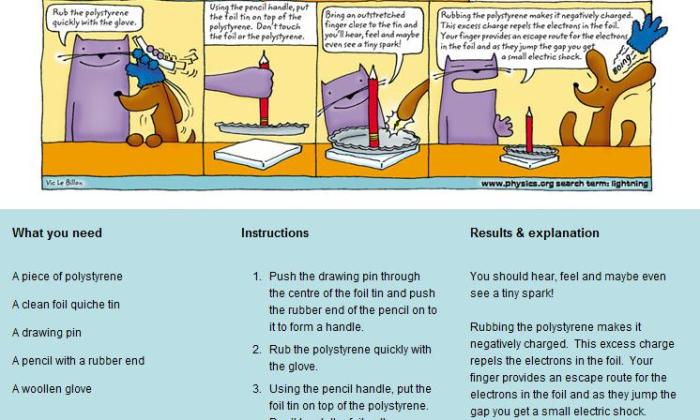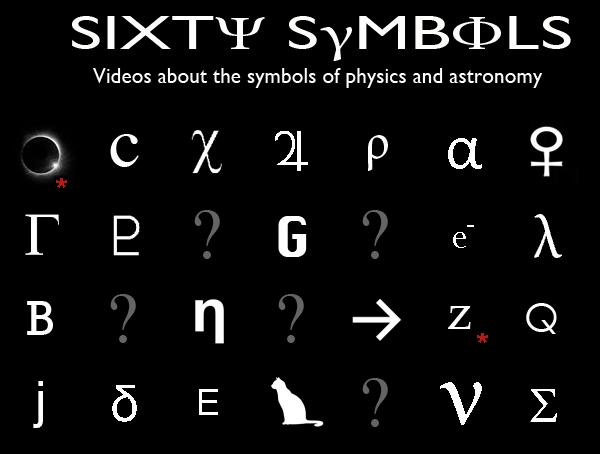Posts Tagged ‘physics’
Kahn Academy
I have to take my hat off to Sal Kahn for a truly immense resource. What he has achieved with the Kahn Academy is nothing short of incredible.
He’s single handedly generated 1000+ instructional videos covering subjects including:
- Economics
- Finance
- Chemistry
- Arithmetic
- Pre-algebra
- Algebra
- Geometry
- Biology
- Trigonometry
- Precalculus
- Statistics
- Probability
- Calculus
- Differential Equations
- History
- Linear Algebra
- Physics
What a wealth of information. This has to be place in the category alongside Academic Earth and Udemy.
FuseBox – Understanding electricity
Vic Voltage is the cartoon character set to help primary or elementary school children around the Fusebox site about electricity and its history, using interactive flash games, activities and general information.
There are circuit boards to create using drag-and-drop components. You can see how three common electrical things work in the home. There’s a section on safety, which took me back to a public information film of the 70s. You can also play an electrically themed version of hangman.
The site is created by CE Electric UK who supply electricity to many homes in the UK, so they should know what they’re talking about.
Physics explained by cartoons
Marvin and Milo are a couple of cartoon characters on the physics.org website that explain how to do some experiments to display physics principles. The cartoons will engage the kids and draw them into the science. The instructions below are clear and simple to follow. There is a dropdown menu to access all the other experiments in the set.

I really like the look of this site and I’ll be returning to other parts of the physics.org website in the future.
Science Bob’s experiments
Science Bob is this guy with what looks like a tie-dyed lab coat. He has some simple, effective science experiments. There are instructions about how to recreate the experiments; some accompanied by videos. Also there are explanations of the science.

Water Bottle Rocket
A couple of years ago I saw a video that capture my interest in creating a water rocket to demonstrate how Newton’s Laws act, hence how a rocket works, and have a bit of fun in the process. Over the intervening period, I forgot about it again, until recently when I came across another example on a BBC television programme, Bang goes the theory (I’ll return to this in a later post).
The latter version of the rocket is somewhat simpler in design, and can easily be recreated.
The original example I now remembered was a bit more involved as a project, and takes a little longer to create. I dug out my early Make Magazines from the garage and found the instructions in there. You can also access them online.
1. Easier design
This is an informative page about the principles, and how to recreate the design with a video embedded.

2. More involved design
This design takes a little more time and effort, and leads to a more ‘explosive’ result.
These are the online instructions from the Make Magazine volume 5 that I’ve got. This is Steve Lodefink’s original design, and there is a video of Steve firing his rocket.
A later instructional video, by Kip Kay is less successful with the rocket, but gives you some pointers.
Additional
You can even have water rocket parties, where you get the kids to decorate their rocket how they want, before launching them, as demonstrated in this finkbuilt post.
Sixty Symbols – Nottingham University Physics & Astronomy videos
This site, Sixty Symbols, does for Physics and Astronomy what my last post, Periodic Table, did for Chemistry.
Links: Sixty Symbols dedicated site & YouTube channel

Exploratorium: the museum of science, art and human perception
Based in San Francisco, the Exploratorium was founded by the famous physicist and educator Dr Frank Oppenheiner, who remained the director until his death in 1985.
I’ll be visiting the site again, and again and probably again; it’s got to great stuff on there.
However, today I’m interested in the After School section, which “brings hands on activities and digital library resources into afterschool play”.
There are well presented instructional videos telling you how to create the activity, how to engage children in the activity, and how to vary things and investigate the results.

